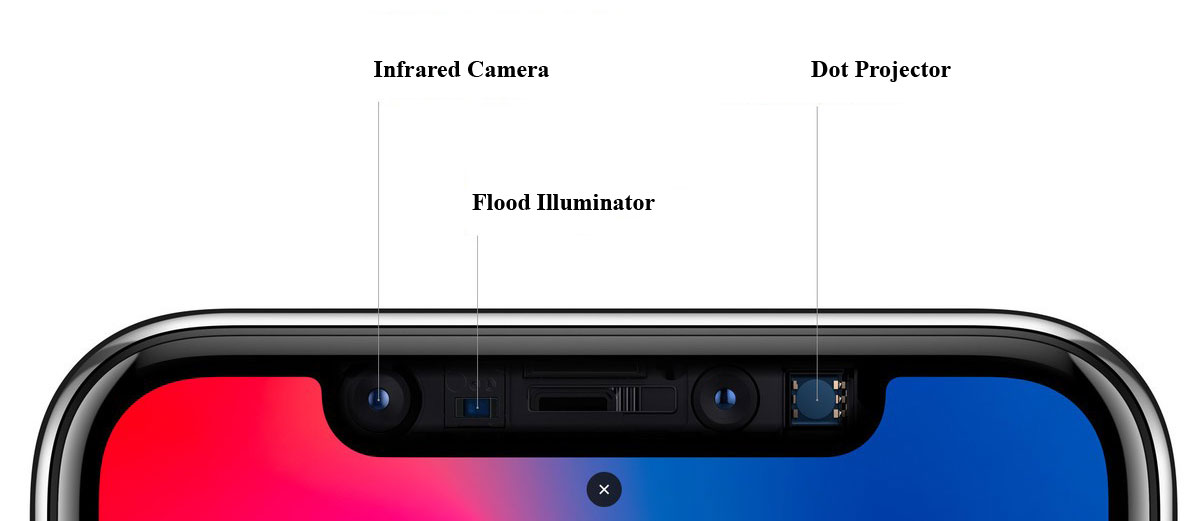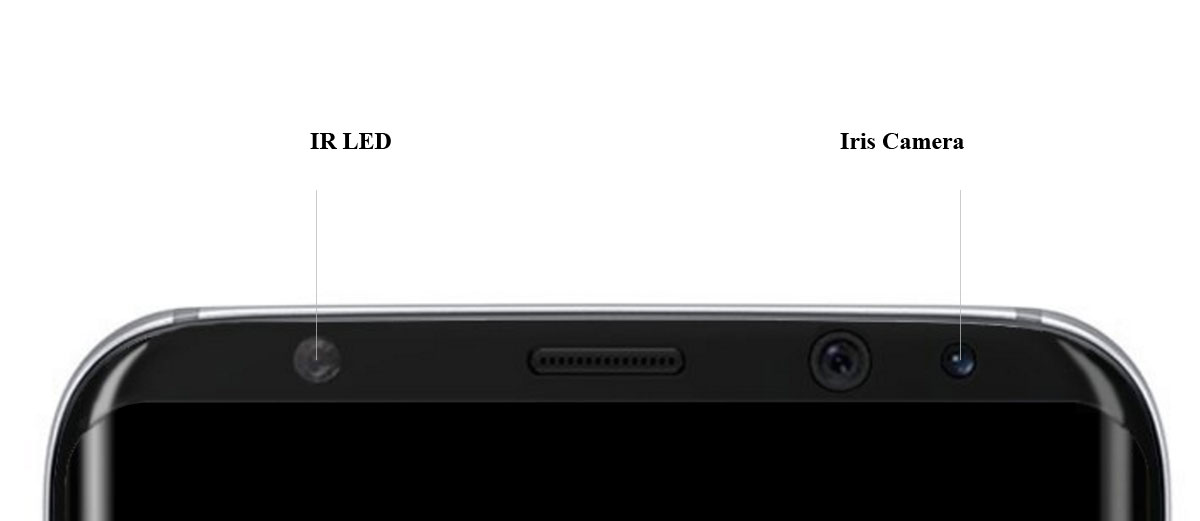2017 sees the rising popularity of biometric scanner, from two rivals: Apple and Samsung. Apple has Face ID and Samsung lineup has Iris Scanning technology.
These two are upgrades from previous technologies (Face ID replacing Touch ID, and Iris Scanner replacing Android's facial recognition). And as expected, the two companies claim that their newer biometric identification technique is superior than previous technology, and better to the other.
So how do they differ?
To understand, here is an in-depth analysis on both Face ID and Iris Scanner, starting by the principles on how they work.
Face ID Explained

The biometric identification technique was first introduced on the iPhone X. As the phone has fullscreen display with practically no bezel, the iPhone X lacks the Touch ID button, so it doesn't have a fingerprint scanner.
As its name suggests, Face ID uses the users' face as the password to unlock the device.
Face scanning feature has been around for a couple of years. But Face ID is proving that previous technologies weren't as secured.
What makes Face ID different from any other face scanning technologies is that, it boast both science and technology. The three main components that are located on the 'notch' of the iPhone X facilitates Face ID advanced face detection technology:
- Dot Projector: Emits more than 30,000 invisible dots onto the face to build a unique 3D facial map.
- Infrared Camera: Analyzes the dot pattern obtained from the Dot Projector. Then, it transfers the data to the secured storage of the A11 Bionic chipset for registering a new face or confirming a match.
- Flood Illuminator: Dedicated infrared flash which throws out invisible infrared light onto the face to make the Face ID work even in dark.
In short, Face ID scans the entire face to generate a 3D map of the face using the three above-mentioned components, and then matches it with the data stored on the phone.
What makes Face ID even different from previous technologies is that, Apple has developed an Artificial Intelligence (AI) and neural network based system which regularly adapts to facial changes. For an instance, the Face ID will continue to work even if the user grows a beard or start wearing glasses.
With the technology, Face ID has also comes better in distinguishing a real face and a picture of a face. So, unlike previous face identification technologies, it is not easy to cheat as it can detect Hollywood-grade masks and won’t unlock the device until it sees a real face.
While Face ID boats technologies that weren't available before, it's not a 100 percent foolproof.
Iris Scanner Explained

This technology was introduced earlier than Apple's Face ID. What it does, is using users' iris as the unique identifier.
For starters, the iris is a thin, colored ring of the eye which dilates and constricts the pupil to regulate the light intake. Every iris is so sophisticated that no two people has the same pattern. This design is different between every human being and even identical twins have dissimilar irises.
How Iris Scanning technology work is quite similar to the mechanism used by Apple’s Face ID. The technology uses two main components to facilitate to identify your iris. Those are:
- IR LED: This is identical to Apple's flood illuminator. The only difference is that the IR LED focuses the infrared light only to the eyes, while the former lights up the entire face.
- Iris Camera: This captures the photo of users' iris after being shot with the IR LED.
The working procedure of the iris scanner is quite simple. The IR LED diode emits near-infrared light and illuminates the eyes. The wavelength of this light is invisible to humans, but can be fairly "bright". This invisible light is used for two reasons: the eye's pupil won't contract and users won't experience a change in vision. It is also able to illuminate anything with a color pattern better than the visible wavelengths.
Because the IR LED uses near infrared wavelength, there are thousands of colors and they contrast with each other very well. This image is captured using the Iris Camera, which will then be sent it to the phone to build a dataset which is then stored, or matched with previous data to unlock the smartphone.
Samsung gives users the option to choose between dual iris scanning (both eyes) or single iris scanning.
Conclusion
Both Face ID and Iris Scanner work in a similar way, and both have the same working principles.
But there are some drawbacks:
Iris Scanner, has problems due to Samsung needs to make it very fast. What this means, not as much data is collected. Samsung needs to find the right balance between security and convenience, because no user wants to wait for a few seconds for the Iris Scanner to work.
The result is clear, Samsung's Iris Scanner doesn't scan the entire iris, but instead collects only some distinct patterns. As a result, the Iris Scanning algorithms can be fooled with a high-resolution photo laser printed in color and a regular contact lens to simulate the curvature of an eye.
Samsung’s iris scanner has already been fooled by a bunch of hackers.
As for Face ID, Apple suffered an embarrassing Face ID fail at its very launch event. Apple also admits that the technology may not be able to differentiate twins, or children as they change a lot faster than adults.
But here Apple has one clear advantages from a user perspective: Face ID is more secure because the face should move (more data is being analyzed) and there is no "sweet spot" as all of the face is being used and the camera uses a wider field of view.
The matrix projected on the face contrasts well against whatever is in the background because it senses depth and can isolate the face's shape.
But again, the result is subjective.
For authentication purposes, the important thing is that the process is accurate and fast. Samsung's iris scanner can be secure and fast as long as the user points the phone in the "sweet spot". But on paper, Face ID is easier to use because it doesn't require the user to be at any particular spot to work.
Both technologies are unique and has their own potential. Iris Scanner can be more secured if it scans more patterns with a lesser time, and Face ID can become a lot better if it includes more variables.